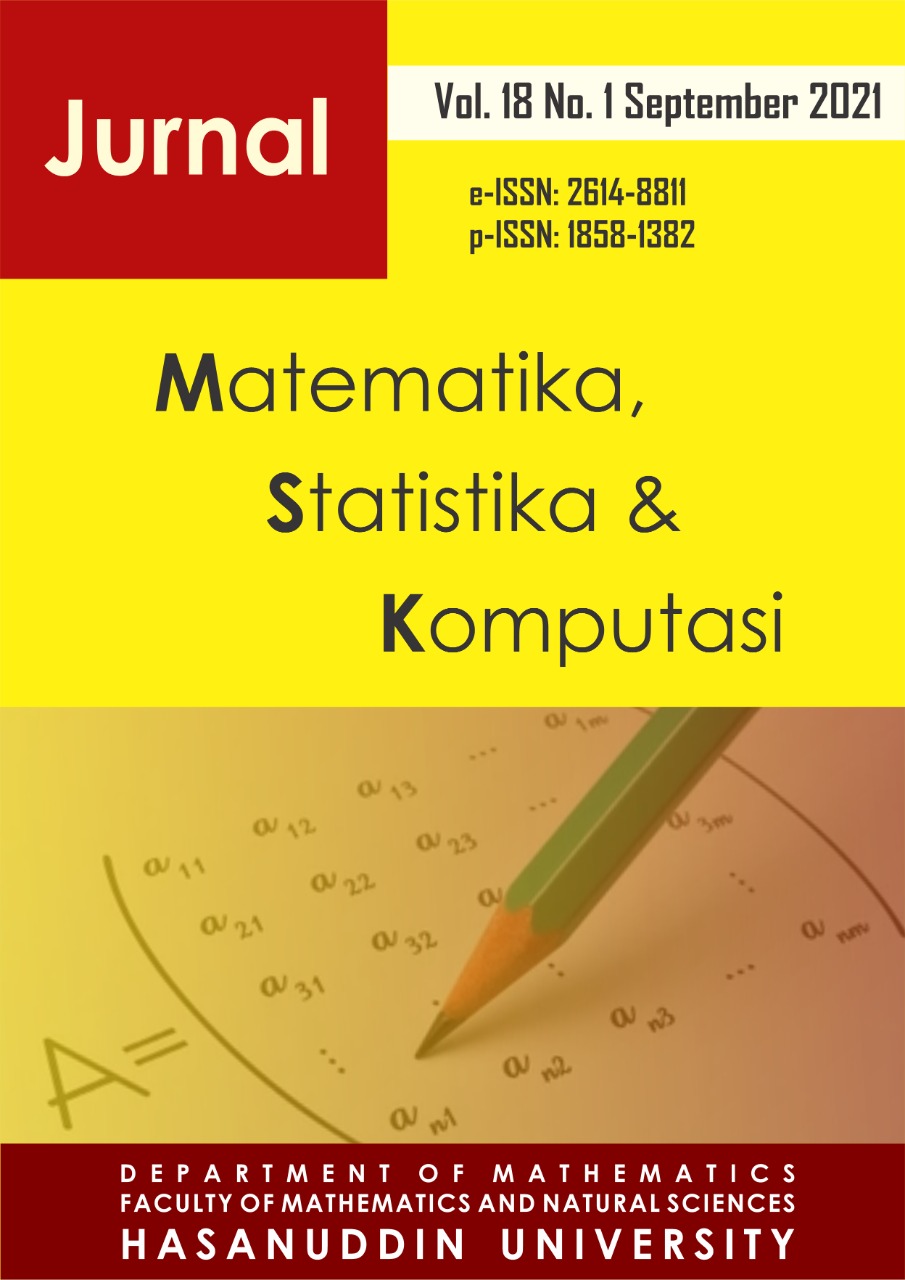Spatial Analysis of Prevalence of Early Marriage and HDI in Indonesia
DOI:
https://doi.org/10.20956/j.v18i1.13975Keywords:
Early Marriage, Human Development Index, Geographically Weighted Logistic RegressionAbstract
Early marriage has become an important issue in Indonesia. Even though the rate of early marriage shows a decline until 2020, the number still makes Indonesia become the country with the second highest early marriage in Southeast Asia. Early marriage that occurs can hinder the achievement of the Sustainable Development Goals (SDG) and can have an impact on the Human Development Index. The existence of a relationship between early marriage and HDI encourages researchers to conduct studies that aimed at examining the effect of the prevalence of early marriage on HDI in each district/city in Indonesia on 2020. This study uses the Geographically Weighted Logistic Regression (GWLR) analysis method with the data sourced from the National Socio-Economic Survey (SUSENAS) raw data in March 2020 and publication data on the website of The Central Bureau of Statistics. The results of the analysis found that the prevalence of early marriage has a negative and significant effect in several districts/cities in the Provinces of Aceh, North Sumatra, West Sumatra, Riau, Jambi, South Sumatra, Bengkulu, Lampung, Bangka Belitung Islands, Riau Islands, West Java, Central Sulawesi, South Sulawesi, Southeast Sulawesi, Maluku, and West Papua. This research is expected to be a recommendation for the government and community organizations to conduct socialization regarding the maturity age of marriage and the adverse effects that can be caused by early marriage.Downloads
References
Badan Kependudukan dan Keluarga Berencana Nasional (BKKBN), 2012. Pernikahan Dini pada Beberapa Provinsi di Indonesia: Akar Masalah dan Peran Kelembagaan di Daerah. Direktorat Analisis Dampak Kependudukan BKKBN, Jakarta.
Badan Pusat Statistik, 2020. Pencegahan Perkawinan Anak Percepatan yang Tidak Bisa Ditunda. BPS, Jakarta.
Birchall, J., 2018. Early Marriage, Pregnancy and Girl Child School Dropout.
BPS & UNICEF, 2016. Kemajuan yang Tertunda: Analisis Data Perkawinan Usia Anak di Indonesia. BPS, Jakarta.
International Center for Research on Women (ICRW), 2003. Too Young to Wed: The Lives, Rights, and Health of Young Married Girls. ICRW, Washington DC.
Kementerian Pemberdayaan Perempuan dan Perlindungan Anak Republik Indonesia (Kementerian PPA), 16 Februari 2021. Mengancam Masa Depan, Mari Cegah Perkawinan Anak, Siaran Pers Nomor: B- 027/SETMEN/ HM.02.04/02/2021. https://www.kemenpppa.go.id/index.php/page/read/29/3053/mengancam-masa-depan-mari-cegah-perkawinan-anak
Kumaidi, & Amperaningsih, Y., 2015. Hubungan Sikap dan Status Ekonomi dengan Pernikahan Dini pada Remaja Putri. Jurnal Ilmiah Keperawatan Sai Betik, Vol. 11, No. 1, 75-80.
Suara.com., 21 Oktober 2020. Kasus Pernikahan Dini Meningkat Selama Masa Pandemi. https://yoursay.suara.com/news/2020/10/21/110151/kasuspernikahan-dini-meningkat-selamamasa-pandemi
UNICEF Indonesia, BPS, PUSKAPA UI, & Kementerian PPN/Bappenas, 2020. Perkawinan Anak Fact Sheet. https://unicef.org/indonesia/id/laporan/perkawinananak-di-indonesia
United Nations (UN), 2015. Sustainable Development Goals. (n.d.). Goals 5: Achieve Gender Equality and Empower All Women and Girls. http://sustainabledevelopment.un.org/sdg5
United Nations Children's Fund (UNICEF), 2008. Early Marriage: Child Spouses. Innocenti Digest, No. 7.
United Nations Children's Fund (UNICEF), 2020. A Generation to Protect: Monitoring violence, exploitation and abuse of children within the SDG framework. UNICEF, New York.
United Nations Programme on HIV and AIDS (UNAIDS), 2017. Supporting Efforts to End Child Marriage in Latin America and The Caribbean. http://www.unaids.org/en/resources/presscentre/featurestories/2017/march/20170324_end-child-marriage
Widyastuti, L., Yuniarti, D., & Hayati, M. N., 2018. Pemodelan Faktor-Faktor yang Berpengaruh Terhadap Indeks Pembangunan Manusia (IPM) di Kalimantan dengan Geographically Weighted Logistic Regression (GWLR). Jurnal Eksponensial, Vol. 9, No. 1, 67-74.
Downloads
Published
How to Cite
Issue
Section
License
Copyright (c) 2021 Author and publisher

This work is licensed under a Creative Commons Attribution 4.0 International License.

This work is licensed under a Creative Commons Attribution 4.0 International License.
Jurnal Matematika, Statistika dan Komputasi is an Open Access journal, all articles are distributed under the terms of the Creative Commons Attribution License, allowing third parties to copy and redistribute the material in any medium or format, transform, and build upon the material, provided the original work is properly cited and states its license. This license allows authors and readers to use all articles, data sets, graphics and appendices in data mining applications, search engines, web sites, blogs and other platforms by providing appropriate reference.








